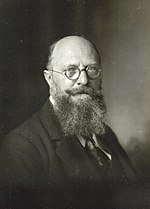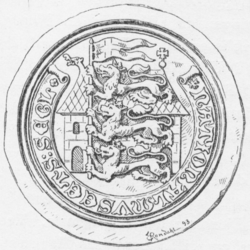Portal:Denmark
Welcome to the Denmark Portal! | ||||

|

|

| |
Denmark is the smallest and southernmost of the Nordic countries. Unified in the 10th century, it is also the oldest. Located north of its only land neighbour, Germany, south-west of Sweden, and south of Norway, it is located in northern Europe. From a cultural point of view, Denmark belongs to the family of Scandinavian countries although it is not located on the Scandinavian Peninsula. The national capital is Copenhagen.
Denmark borders both the Baltic and the North Sea. The country consists of a large peninsula, Jutland, which borders Schleswig-Holstein; many islands, most notably Zealand, Funen, Vendsyssel-Thy, Lolland, and Bornholm; and hundreds of minor islands often referred to as the Danish Archipelago. Denmark has historically controlled the approach to the Baltic Sea, and those waters are also known as the Danish straits.
Denmark has been a constitutional monarchy since 1849 and is a parliamentary democracy. It became a member of the European Economic Community (now the European Union) in 1973. The Kingdom of Denmark also encompasses two off-shore territories, Greenland and the Faroe Islands, both of which enjoy wide-ranging home rule. The Danish monarchy is the oldest existing monarchy in Europe, and the national flag is the oldest state flag in continuous use.
Selected biography

Thorvald August Marinus Stauning (26 October 1873 – 3 May 1942) was the first Social Democrat Prime Minister of Denmark.
Stauning was trained as a cigar sorter and soon became involved with trade union activity. From 1896 to 1908 he was leader of the Cigar Sorters' Union, in 1898-1904 also editor of the magazine Samarbejdet (Co-operation) of the Federation of Trade Unions, and elected Member of Parliament (Rigsdagen) in 1906.
In 1910 he was elected chairman of the Social Democratic Party (Socialdemokratiet), a position he retained for almost thirty years, until 1939. He became Prime Minister in 1924 - leading a minority cabinet which would survive until 1926. His cabinet was considered ground breaking not only as it was the first purely Social Democratic cabinet, but also because a woman, Nina Bang, was appointed Minister of Education, which attracted some international attention.
From 1929 he led a successful coalition cabinet with the Danish Social Liberal Party that would steer Denmark out of the Great Depression, shaping a major political compromise that greatly improved the Danish economy, and also transformed the Social Democratic Party from a class party to a popular party.
Recently selected: Nicolas Steno - Knud Rasmussen - Johan Ludvig Heiberg
Selected picture

Illustration from an article Fra den sidste Tid written by Erik Schiødte and published in "Tidsskrift for Kunstindustri", 1893
Selected article
The Count's Feud takes its name from the Protestant Count Christopher of Oldenburg, who supported the Catholic King Christian II, deposed in 1523 and at that time being held in prison.
After Frederick I's death in 1533, the Jutland nobility proclaimed his son, then Duke Christian of Gottorp, as King under the name Christian III. Meanwhile, Count Christoffer organized an uprising against the new king, demanding that Christian II be set free. Supported by Lübeck and troops from Oldenburg and Mecklenburg, parts of the Zealand and Scania nobilities rose up, together with cities such as Copenhagen and Malmö. The violence itself began in 1534, when a privateer captain who had earlier been in Christian II's service, Klemen Andersen, called Skipper Clement, at Count Christoffer's request instigated the peasants of Vendsyssel and North Jutland to rise up against the nobles. The headquarters for the revolt came to be in Aalborg. A large number of plantations were burned down in northern and western Jutland.
Selected place
Owing to its natural harbour and its strategic position in the Baltic Sea, Rønne has an interesting history coming under German and Swedish influence during its development as a herring fishing port. Today, with its quaint cobbled streets, half-timbered houses and interesting museums, it attracts visitors mainly from Denmark, Germany, Sweden and Poland.
Categories
Denmark topics
Things you can do
- Expand stubs:
Geography stubs · People stubs · Denmark stubs in general
Help us extend these stubs and make them real articles!
- Categorize:
Help us categorize Denmark-related articles
- WikiProjects:
Have a look at WikiProject Denmark, WikiProject Faroe Islands, WikiProject Greenland and WikiProject Norse history and culture
- Noticeboard:
Have a look at the Danish Wikipedians' notice board
- Geotag:
Find coordinates for these locations and tag them: articles missing geocoordinate data
Related portals
Northern Europe
Other countries
Associated WikiMedia
The following Wikimedia Foundation sister projects provide more on this subject:
-
Commons
Free media repository -
Wikibooks
Free textbooks and manuals -
Wikidata
Free knowledge base -
Wikinews
Free-content news -
Wikiquote
Collection of quotations -
Wikisource
Free-content library -
Wikispecies
Directory of species -
Wikiversity
Free learning tools -
Wikivoyage
Free travel guide -
Wiktionary
Dictionary and thesaurus













